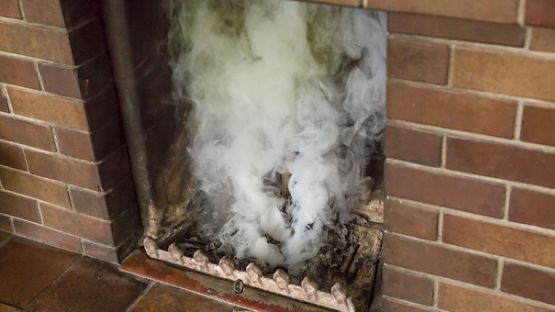If you’re like most Canadians, the time you spend at the cabin is precious. It’s the place you get away from it all, take in the outdoors and enjoy solitude and special moments with friends and family.
The last thing you want to do is deal with an insurance claim. The best way to avoid damage to your cabin and an intrusion on your time there is to prevent a problem before it happens.
We spoke with Shawn Mckone, senior manager in specialty claims at Aviva, to find out the top four cabin insurance claims—and what you can do to avoid them.
Water
Water is the root cause of most of the cabin claims that come through Aviva. Mckone says damage typically comes from various types of water escaping from a plumbing system or weather-related infiltration from outside.
“It’s more problematic in cabins because they’re usually unoccupied for long stretches of time. If a pipe breaks in the middle of winter and you’re not there for three months, you’re going to arrive to three months’ worth of damage,” he said.
“That’s where you get into ongoing problems of rot, mold and deterioration. It’s a lot worse than if the water was dealt with right away.”
A helpful way to prevent water damage from a faulty plumbing system is to shut off the main water supply before you close up for the season, or even if you’re going to be away from the property for a few weeks.
You can minimize the risk of water damage from water infiltrating from the outside by ensuring regular maintenance is performed on the cabin. That includes making sure the roof is in good repair, ensuring there’s proper drainage around the foundation and the downspouts and eaves are aimed properly and free of debris.
Wind
Windstorms are responsible for a high number of cabin claims, particularly in southwestern Alberta, where wind can be severe.
“Wind damage is a lot more common for cabins than in regular homes because they tend to be in heavily wooded areas. A lot of trees come down in a windstorm,” said Mckone.
Other damage includes shingles being blown off the roof and objects being tossed into cabins and outbuildings.
Mckone says it’s not possible to prevent every type of wind damage, but you can take steps to limit it. “It’s especially important to know when your roof is getting close to the end of its life expectancy. Asphalt shingles lose strength and integrity, and it doesn’t take a severe windstorm to tear them off or flip them up. You can prevent that by replacing the roof when it gets old.”
Cabin owners who live in an especially windy area often invest in wind-resistant products and wind-proofing installation techniques or have tile or rubber roofs which are heavier than asphalt shingles.
A simple way to help prevent damage around your property is to avoid leaving furniture and loose items that could get picked up and thrown around in the yard.
Theft
Think you’re free from theft by getting out of the city? Not so much, according to Mckone.
“The difference between primary homes and cabins is that thieves don’t fear someone coming back right away. They may scope the place out and if they don’t see an owner coming and going, they know they can take their time. It’s not a quick ‘smash and grab’,” said Mckone.
“In some of these claims, we see the result of thieves thoroughly going through everything and even coming back multiple times because they have so little worry of someone showing up.”
The best prevention is to avoid leaving valuables like jewellery, electronics and other expensive items at the cabin. And that includes recreational vehicles. “Don’t leave attractive items like ATVs and motorbikes scattered across the yard. It’s easy to pull up and take them.”
Security devices such as motion sensors, alarms and light timers are helpful, but they won’t make your cabin break-in proof. “They just make it a little more difficult. Thieves know that the police response time will be very long for a cabin in the middle of nowhere. The best defence is not to leave anything worth stealing.”
Snow load
During a winter with a particularly heavy snowfall, homeowners are often cued to shovel off a thick accumulation to protect the roof of their house and garage.
“When it comes to cabins, it’s often out of sight, out of mind. A heavy snow load can cause a cabin or outbuilding to collapse in on itself. It’s an underappreciated event that happens in cottage country,” said Mckone.
Prevention may include ensuring snow is removed after large snowfalls to avoid letting it build up.
“Removing snow one to three times a season is usually a good idea to avoid overwhelming a structure, particularly if it’s a smaller outbuilding.”
Taking a few extra steps to prevent common problems with your cabin is the best way to avoid damage in any season. Another way to reduce stress is to get the right insurance coverage. Check out Aviva’s RetreatLife product, which is specially designed for the realities of cabin ownership.













